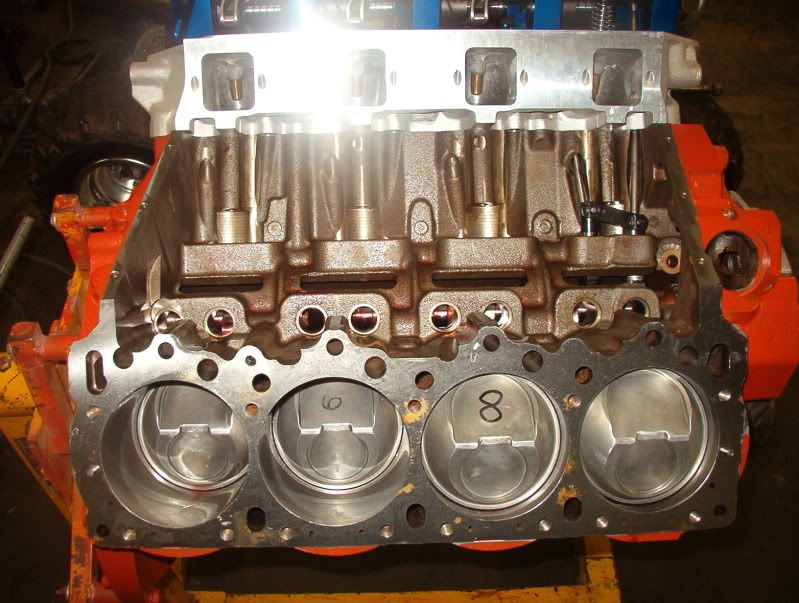Finally got everything mocked up, short block together etc. Despite some trouble with with the rotating assembly, (actually a rod bearing issue).
Well
I talked with a few of some very helpful people on this board, so I decided to do some checking for possible valve to valve issue's. I measured the distance between the valves with the valves on the seat, and didnt like what i found.. Mopar calls for .280-.300 for cams above .700 lift. I had right at .255-.260 or so. So I knew this might be a problem..
Well this cam is has wide lobe centers of 112 LSA, I degree'd and checked the cam and installed it at a 109-110 ICL so its advanced a hair.
Well I was checking piston to valve clearance which is fine By the way...
Anyways
I was checking piston to valve clearance and noticed that the valves during overlap was very close, you can see the valve events pretty good looking through the intake port..How close..Well they didnt touch rotating the engine in the correct direction. But as I rotated the engine back words, I guess the slop in the timing chain etc retarded the cam, or changed the valve events enough that the valves clipped each other...They physically hit one another.. I had those light checker springs installed etc, so I didnt bend any valves etc. Luckily..
So now, I want to run this cam, so I must address the valves/heads to correct this issue. I know I can sink the valves, Should I sink just one valve like .050 or sink them both like .025? The valves are on diff angles so maybe I can gain more by sinking one valve compared to sinking the same amount off the other?
Can the valves them self's be back cut any to gain any radial clearance??
Even if I can take as little as .008-.010 off each valve diameter would help..
Thanks in advise
Bob Coomer




